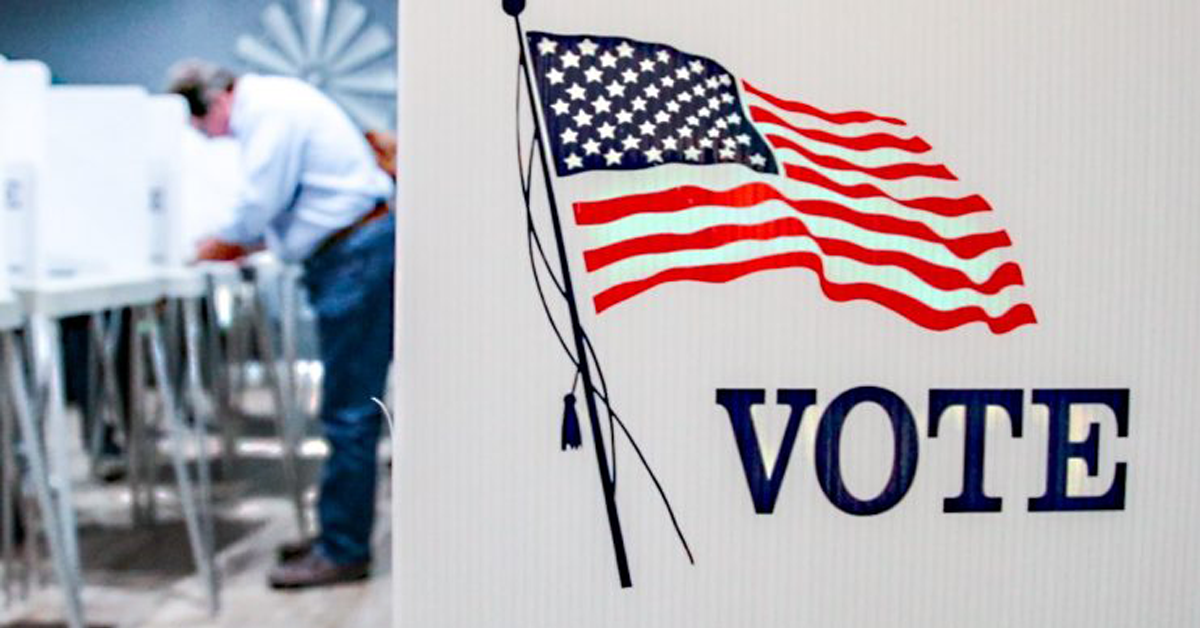Things are starting to tilt away from Democrats in California’s battleground districts as the state continues its tradition of breaking against national trends.
As I write this, Democrats are slightly over-performing expectations in the national early vote based solely on modeled party data from data company Target Smart.
However, one has to take that with a grain of salt because not all registered Democrats will vote for Democrats, and not all registered Republicans will vote for Republicans. Also, true Independents and NPP voters across the country are breaking to the right this election if you believe the vast majority of polls.
With the failure of the national polling industry and the mainstream media to accurately poll elections the last four cycles, I could forgive anyone for not believing in polls, regardless of their political leanings.
People should refrain from using the Early Vote to try and predict election outcomes. Instead, it should be one data point to make a comprehensive analysis.
Unfortunately, far too many conservative bloggers and pundits are taking premature victory laps in deep blue California at this hour. At the end of the day, the only math that counts in elections is the votes counted after the polls close on election night.
That being said, there are enough warning signs for Democrats in Early Voting, Polls, Current and Historical Trends, and the movement of late-breaking and undecided voters in California at this hour that the California Democratic Party should be concerned about any strong election day turnout.
Something that Republican voters are telling pollsters they are very enthusiastic about doing. Even so, it is always better to have votes in the bank than hope they turn up on election day. That is a slight advantage to the Democrats in California.
A strong turnout on election day would probably indicate GOP over-performance in California’s final expected election results.
Should a ‘Red Wave’ actually form in California, it will likely start in the Central Valley, and should it continue to rise, the wave’s high water mark may not ebb until it reaches parts of Orange County, San Diego, and even the Central Coast at this point.
The Democrats feel that even in the 26th Congressional District, on California’s central coast, is in play based on their late spending.
If that is true, it would be unwelcome news for Democrats in the 9th, 13th, 22nd, 27th, 47th, and 49th Congressional districts.
The hard facts are these: Based on all fundamentals we know of how to predict elections, none (and I mean absolutely none) of the fundamentals favor the Democrats in this election.
It is possible (if not probable) that Republicans will pick up congressional seats in intensely blue California for the second election in a row.
The chances of Republicans picking up seats in back-to-back elections in the State Assembly also seem possible. Democrats are in real dog fights in many Assembly Districts they were not expecting to have to fight hard for this year. These unexpected battlegrounds range from Sacramento in Northern California to San Diego in Southern California. Republicans have serious opportunities in seats anchored by Placer and Merced counties, for example. Republicans are virtually assured of a pick-up in a newly drawn open seat anchored in Stanislaus County. (Note: I am working for the Republican Candidate in that seat for full transparency.) Republicans have serious problems in an Orange County seat and lost a Central California seat due to redistricting. Despite a redistricting year that was much more favorable to Democrats than Republicans in California, Republicans have a fair shot at actually making gains in the State Assembly and Congressional Delegation on November 8th.
The good news for California Democrats comes out of the State Senate, where California Republicans botched a safe seat in the 4th Senate District. A Democrat will represent a double-digit Republican seat at the end of this election due to the state’s Top Two Primary system and a major unforced error by State Republicans.
However, Democrats are struggling in the 16th Senate District, which ranges from Bakersfield to the Nevada Border. Despite many reasons for Republican optimism in California, in all likelihood, California Democrats will reduce the already anemic number of Republicans in the State Senate.
If we look at the early ballot returns from California’s best election data company: Political Data, the Democrats are down about 15 percent compared to their advantage against Republicans in the state at this same point in time compared to the 2020 election.
Comparing per-capita share with the 2022 Primary Election in California, we can see that Democrats are keeping pace with their primary turnout, but Republicans are slightly over-performing against their primary turnout.
The 2022 Primary was a very low-turnout election where republicans squeezed out a small majority vote share in many battleground seats across the competitive parts of the state. When we consider that non-partisan preference voters and late undecided voters are telling pollsters (both public and private polls) that they are more opt to break for the Republican party this year over their growing concerns over Inflation, Crime, Homelessness, and Housing, it adds up to challenging conclusions for California Democrats in competitive districts.
Many left-leaning pundits and commentators will point out the disruption in the electorate caused by the Dobbs v. Jackson decision this year.
While it is true that abortion is playing stronger with voters in California than the national average, it is mainly being propped up by Democrats alone and does not rank as a top issue in the minds of California Republicans or Independents.
This disparity is even worse in battleground seats in California’s Central Valley, where President Joe Biden and Gov. Newsom find themselves underwater with approval ratings in virtually every poll.
With just ten days to go in the 2022 midterm election, the bottom line is that any objective analysis would suggest that there are strong, and likely growing, headwinds blowing against California Democrats, much like it was for California Republicans in 2018.
If Republicans are picking up seats in California, you can probably bet strongly that the Democrats have not just lost control of the House; they probably will finish the night down 20-30+ seats in that chamber. Although a polling error, unforeseen strong election day turnout for the typically early voting Democrats, or even a mass rebellion of women across all demographics may be overlooked by election forecasters, it seems highly unlikely at this hour.










